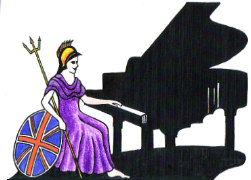Teachers, Accompanists and Piano Entertainers in the UK

UK Piano Page

Camden, London NW3
England
Piano moving and disposing Camden and surrounding
Lambeth, London SW9
England
Lambeth, South West London, Piano Moving and
Ambrose House
20, Chapel Brow
Preston, Lancashire PR5 2NE
England
Eldon Place
53 Preston New Road
Blackburn, Lancashire BB2 6AY
England
Established in 1986, Time and Tune has a
404 Marine Road East
Morecambe, Lancashire
England
We have a large range of acoustic and digital
Music Festival for performers and guests Our 10th
18-06-2022 12:30PM
The Morecambe Bay Piano Group was set up to extend
11-12-2021 01:00PM
The Morecambe Bay Piano Group was set up to extend
08-01-2022 01:00PM
The Morecambe Bay Piano Group was set up to extend
12-02-2022 01:00PM